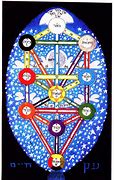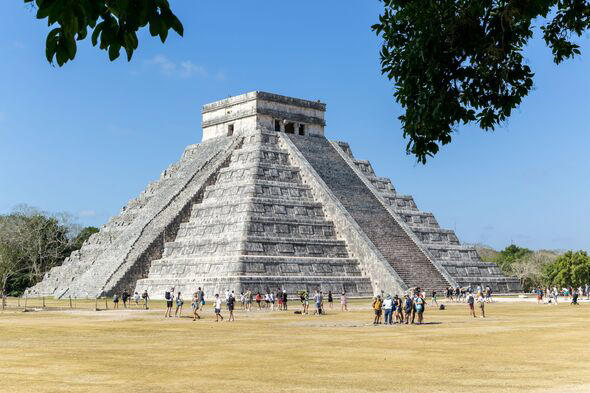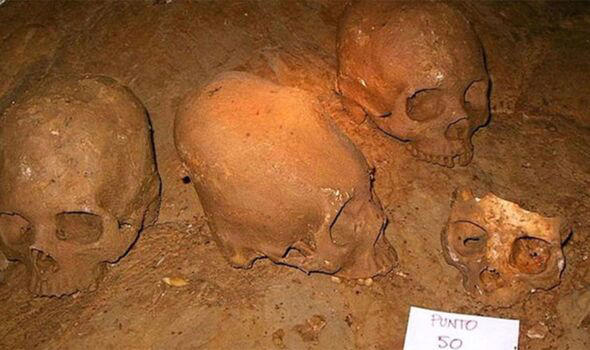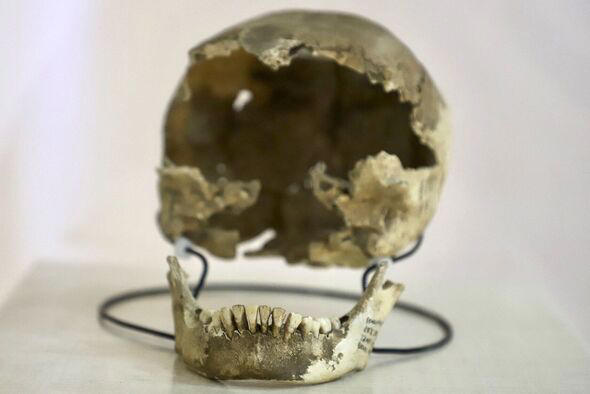ARCHAEOLOGISTS CRACK MYSTERY OF ANCIENT MAYA AFTER 7,000-YEAR-OLD REMAINS FOUND













Archaeologists crack mystery of ancient Maya after 7,000-year-old remains found
The Maya have fascinated historians for centuries, a civilisation that lived as far back as 1800 BC.
Although they were encountered by the Spanish Conquistadors in the 1500s, American traveller and archaeologist John Lloyd Stephens is largely credited as the first Westerner who stumbled across their famous ruinous cities, discovering them during a journey between 1839 and 1842.
Today, descendants of the Maya still live in their former homelands across Central America but number nowhere as many as they once did during the peak of their empire - a figure that has been placed as 20 million strong.
Many of the sites at which they once lived have since been dug up and excavated all across the region, with a number of relics key to understanding their culture found.
One such find previously took place in the Tacotalpa municipality of Tabasco state in southern Mexico, where archaeologists stumbled upon a treasure trove of human remains thousands of years old.
Found inside the Puyil cave, researchers say the age of the bones places them in a period when humans shifted from being hunters to living a more sedentary lifestyle.
At least one of the remains was recorded as being 7,000 years old, while the others date back at least 4,000 years.
Archaeologist Alberto Martos, part of the team that excavated the site in 2018, said: "Seven thousand years old is what we've just placed it, which is the period of transition from being hunters to sedentarism.
"There were different groups during this time that used the caves, clearly it wasn't a domestic cave.
"In prehistoric times it was probably used for rituals and cemeteries, so as to dispose of remains of people.
"For the Maya, it was a cave of ancestors. This cave was used by the Maya, they respected the remains that were already there and left their own remains inside."
In essence, the remains enabled scientists to study and better understand what was happening at the time that the Maya civilisation traded hunting for a life of stability in cities and static dwellings.
There is more, however. The discovery of such skeletal remains also offers scientists vital information about things like dietary habits, which in turn provide snapshots about their way of life.
A few years after the discovery at Puyil cave, archaeologists analysed a set of teeth which once belonged to a high-ranking Maya chief called Ajpach' Waal.
Buried in Mexico some 1,300 years ago, Ajpach' Waal was born and raised in an elite family and enjoyed the finer things in life: good food, drink and easy access to luxury items of the time.
He grew up to become an ambassador in his community and negotiated an alliance between two major Mayan dynasties in 726 AD.
Yet, through his bones, researchers were able to piece together an altogether more bleak image of Ajpach' Waal's upbringing, both sides of his skull extremely spongy and porous indicating malnutrition in youth.
His right tibia, or shinbone, was at some point in his life fractured, likely the result of an injury during a contact sport.
Many of his teeth had been lost through gum disease, and a painful abscess was prominent in his mouth - not to mention the arthritis that was detected in the wearing and bending of his bones.
Writing in the journal, Latin American Antiquity, Kenichiro Tsukamoto, an assistant professor of anthropology at UC Riverside and lead author of the study, said: "The ruler of a subordinate dynasty decapitated Copán's king 10 years after his alliance with Calakmul, which was also defeated by a rival dynasty around the same time.
"We see the political and economic instability that followed both these events in the sparse burial and in one of the inlaid teeth."
Mr Tsukamoto added: "His life is not like we expected based on the hieroglyphics.
"Many people say that the elite enjoyed their lives, but the story is usually more complex.
Articles - Latest
- 3.2 MILLION-YEAR-OLD HUMAN ANCESTOR 'LUCY' HAD MASSIVE LEG MUSCLES TO STAND UP STRAIGHT AND CLIMB TREES
- PIONEERING BBC JOURNALIST STEPHEN GRIMASON DIES AGED 67
- AFTER DEATH: WHAT ARE THE BURIAL ALTERNATIVES TO REST IN PEACE?
- THE OTHER BOLEYN GIRL REVIEW – THE SEXUAL STRATEGISING OF THE CONNIVING BOLEYN FAMILY BROUGHT SHARPLY TO LIFE
- MICHAEL BYRNE DIES AGED 36 AS TRIBUTES PAID TO FORMER GRAND NATIONAL JOCKEY
- Ukraine’s former Olympian weightlifter Oleksandr Pielieshenko killed in action
- FROM WHITE MISCHIEF TO BILL & TED, JOSS ACKLAND WAS AN ACTOR OF RARE POISE, RANGE AND PATHOS
- FOUNTAINS OF DIAMONDS THAT ERUPT FROM EARTH'S CENTER ARE REVEALING THE LOST HISTORY OF SUPERCONTINENTS
- ANCIENT HUMANS USED CAVE IN SPAIN AS BURIAL SPOT FOR 4 MILLENNIA, 7,000 BONES REVEAL
- THE MOODY BLUES FOUNDER MIKE PINDER HAS DIED AGED 82
- GOLD POCKET WATCH FOUND IN TITANIC SOLD FOR RECORD-BREAKING PRICE
- 5 CATASTROPHIC MEGATHRUST EARTHQUAKES LED TO THE DEMISE OF THE PRE-AZTEC CITY OF TEOTIHUACAN, NEW STUDY SUGGESTS
- FRENCH PALME D’OR WINNER LAURENT CANTET DIES AGED 63
- Norman Lear obituary
- AN UNHOLY TRAFFIC: HOW THE SLAVE TRADE CONTINUED THROUGH THE US CIVIL WAR
- QUEEN CHARLOTTE WAS ‘PERSON OF COLOUR’, MUSEUM CLAIMS IN LGBT GUIDE
- JEANETTE WINTERSON: I DIDN’T BELIEVE IN GHOSTS… UNTIL I STARTED LIVING WITH THEM
- ANCIENT HUMAN ACTIVITY DISCOVERED IN KILOMETER-LONG LAVA CAVE
- DNA ANALYSIS SPANNING 9 GENERATIONS OF PEOPLE REVEALS MARRIAGE PRACTICES OF MYSTERIOUS WARRIOR CULTURE
- LOST CITIES HIDDEN FOR THOUSANDS OF YEARS DISCOVERED UNDER FOREST
- LETTER: ALAN ARKIN OBITUARY
- ARCHAEOLOGISTS CRACK MYSTERY OF ANCIENT MAYA AFTER 7,000-YEAR-OLD REMAINS FOUND
- NEW JERSEY REP. DONALD PAYNE JR. DEAD AT 65
Articles - Most Read
- Main
- Contact Us
- The science behind Ouija boards
- Cosmic Consciousness - What is Cosmic Consciousness-2
- Cosmic Consciousness-Introduction
- Cosmic Consciousness - Introduction-2
- MASSIVE 6.1 MAGNITUDE EARTHQUAKE HITS NEW ZEALAND AS NATION STILL REELING FROM CYCLONE
- ARCHAEOLOGISTS UNRAVEL THE TRUTH OF APHRODITE, GODDESS OF LOVE, ON VALENTINE'S DAY
- The Human Condition-Thomas Keating
- Cosmic Consciousness First Words - 1V - 2
- Cosmic Consciousness First Words - V -
- Cosmic Consciousness V - 2
- Cosmic consciousness - First Words - IV
- Cosmic Consciousness - What is Cosmic Consciousness?
- Evolution and Devolution-Chapter 2
- The Human Condition - Thomas keating-3
- The Human Condition-2-Thomas Keating
- Drinking From The Mountain Stream - Milarepa
- Cosmic Consciousness-On the Plane of Self Consciousness
- The Human Condition - 4
- Cosmic Consciousness - 3 - On the Plane of Self Consciousness
- Evolution and Devolution-Chapter 1
- The Human Condition - 6
- Shakyamuni Buddha or India the 1st “Black Revolutionary Hero.”
- On the Plane of Self Consciousness - 2
- Milarepa's World
- The Human Condition - 5
- Milarepa's World-2
- The Buddhist System of Liberation
- Contemplation and the Divine Therapy - 2
- On the Plane of Self Consciousness IV
- The Buddhist System of Liberation - 2
- JERRY RAWLINGS, GHANAIAN STRONG MAN WHO CAME TO POWER IN A COUP BUT INTRODUCED DEMOCRACY – OBITUARY
- On the Plane of Self Consciousness IV - 2



